Career
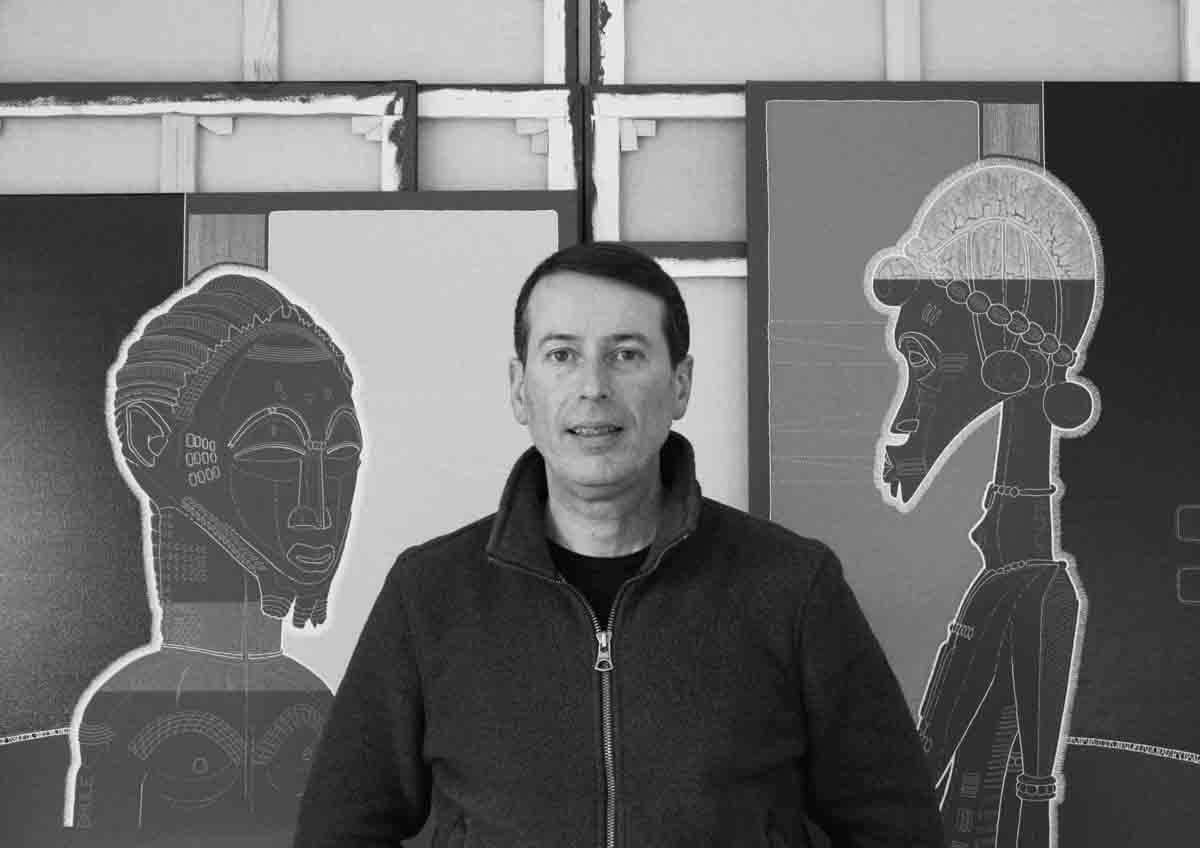
Fred GUILLET was born on 01/06/70 and lives in Nantes (France).
> 1991 : National Diploma of Arts and Techniques,
School of Fine Arts of Bordeaux.
> 1992-2000 : Creative Director within communication agencies.
> Since 2001 : Director of a publishing company.
> At the same time : Pictorial work on the theme of traditional African art.
Presentation
It was while exploring his fascination with the sculpted busts of Modigliani, as well as the works of Picasso and Basquiat, that his artistic research turned towards traditional African Art. By focusing with greater depth on certain cultures, he discovered the meaning and richness of their language. Even though many of these pieces were created in a now distant past, they retain a contemporary feel. With his research focusing on shapes and lines, through portraits and postures, he was naturally drawn to African masks and statues.
At the same, Fred Guillet was raised on a diet of Western Culture. Since he studied at Beaux-Arts, his artistic references come from the worlds of Modern Art, ranging from Pop Art to Figuration Libre (Neo-expressionism). He hopes to position his language between these two worlds, building a bridge between traditional African art and modern art. It is an invitation to discover the reciprocity between these cultures, between old and new, and between sculptural and pictorial expression.
His first paintings helped define both the universe of his work and his language. Following extensive research into the iconography of different cultures, he chose pieces that are primarily commemorative or statues of ancestors, using them to create portraits as he might with a human model. He tries to learn as much as possible about the history and experiences of each statue, the context of their creation and how they were used, in order to understand their significance and get a sense of their spiritual dimensions. Stripped of their volume, he faithfully represents them within a minimalist environment and halo of light to better reveal their lines and form. By uniformly presenting these beings in a neutral grey, their peculiarities stand out. Their material is obscured and only hinted at. The colours, coming from natural or synthetic pigments, seem almost monochrome across the different paintings, providing a sharp contrast with the intensity of the black. The statues, already considered as icons, appear posed, sometimes seeming to communicate with each other. Represented in this way, the context of time is wiped away and these statues of traditional African art appear in a new dimension that fits within the contemporary world. The result is a contemporary gallery of portraits of African cultures.
Artistic approach








Preparatory work
« My works starts with a meticulous examination of the pieces I wish to make a portrait of.
Following the most complete possible iconographic research, I choose an angle or view and the format of the canvas.
Next, I draw each piece in pencil on a sheet of paper, capturing their main lines.
Depending on the subject being represented, I now determine the general construction of the painting : the spatial distribution and framing.
At this stage, I also choose the paints (natural or synthetic pigments) which will serve as the base of my colours.
The sketched drawing becomes the base outline for the painting.
This outline is projected in its final form on the canvas, on top of the grey background which I prepared earlier.
I now trace each line in minute detail before I start painting … »
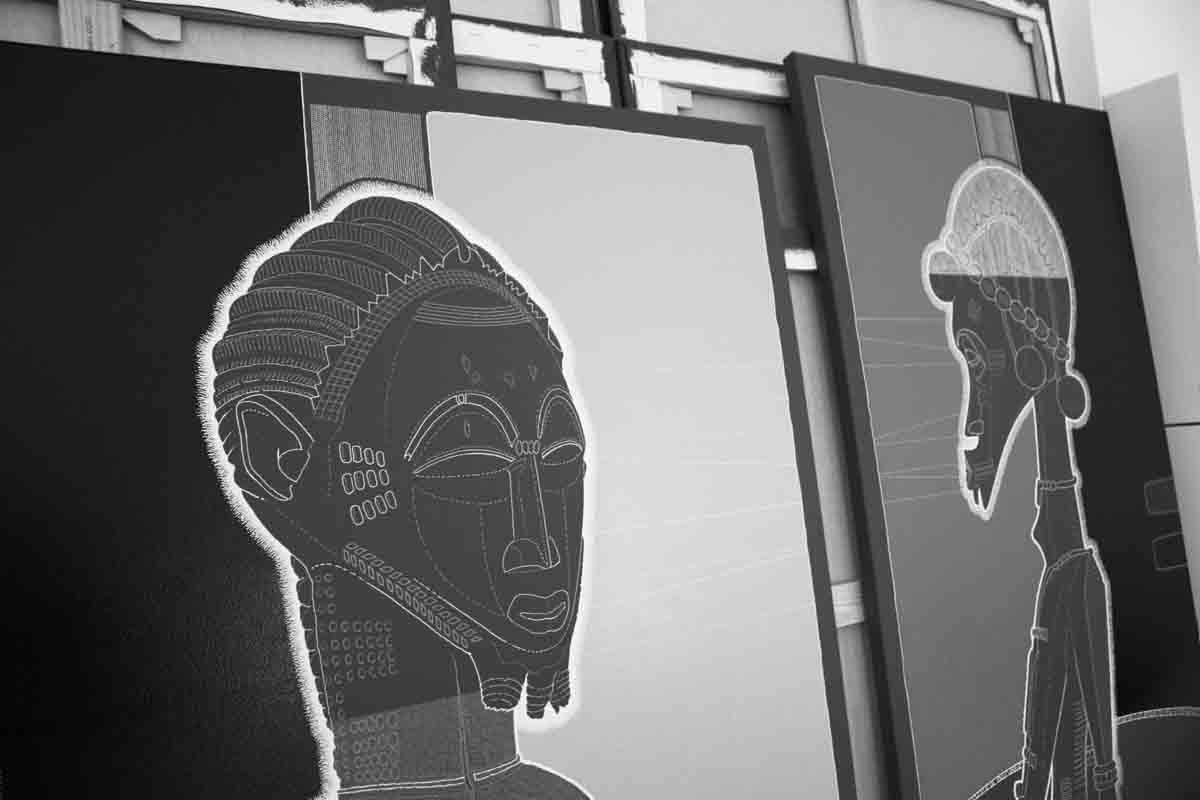
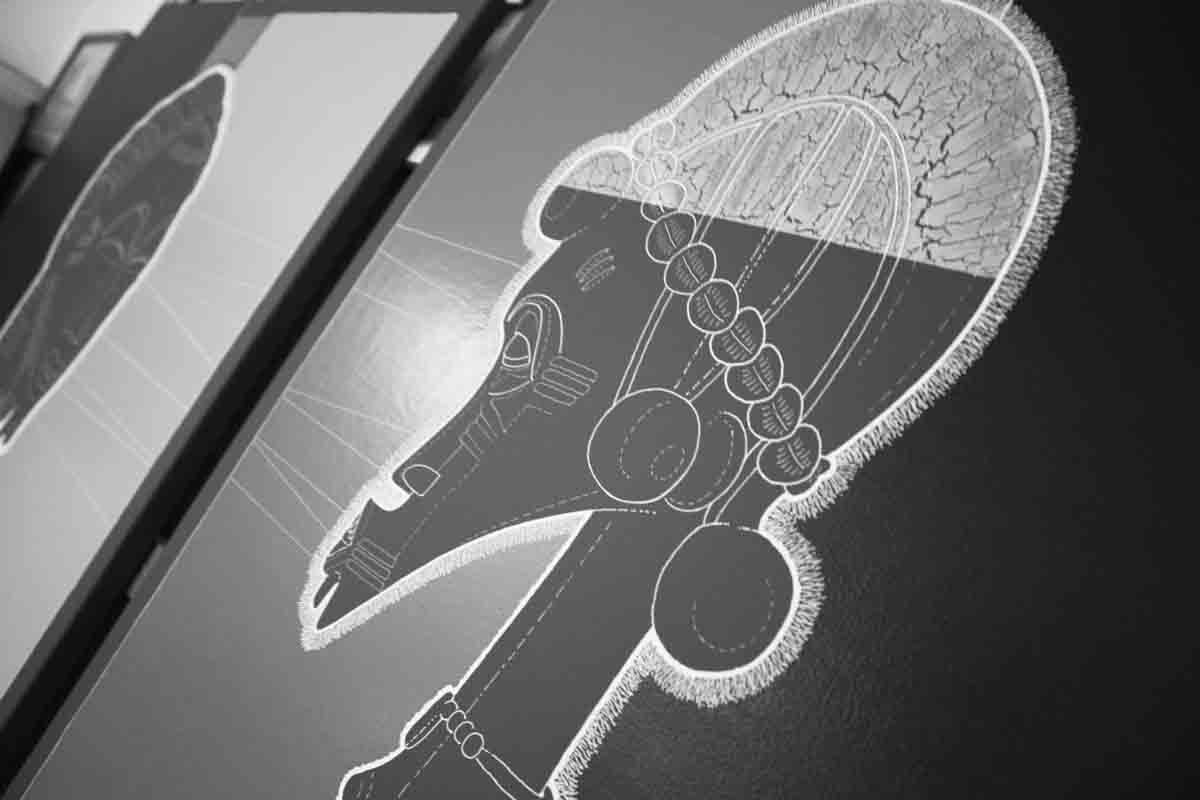
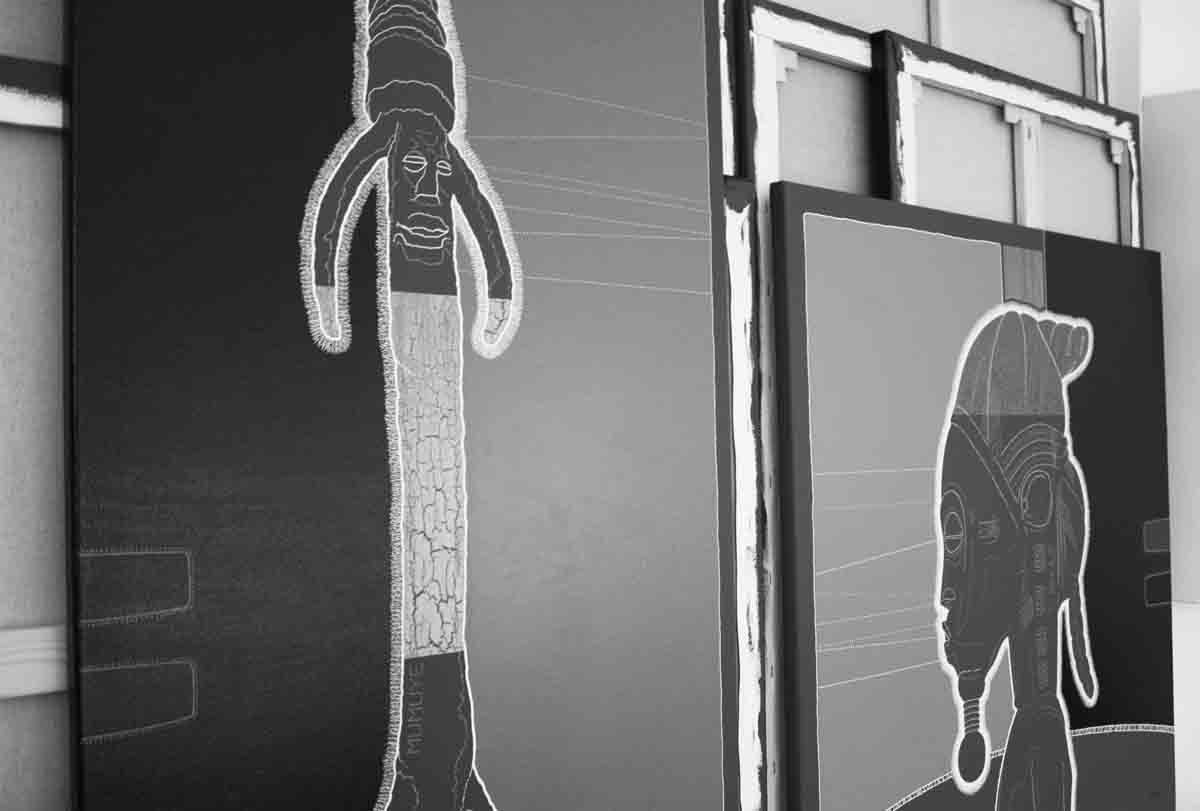


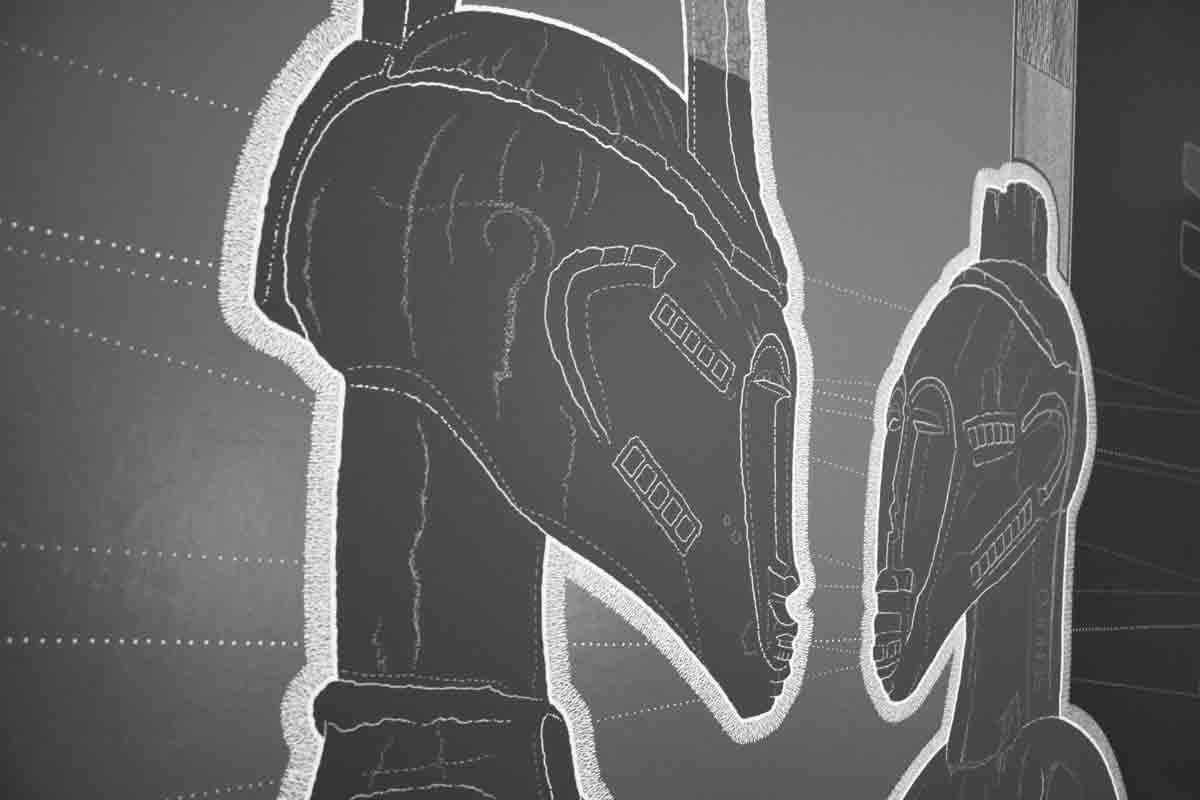

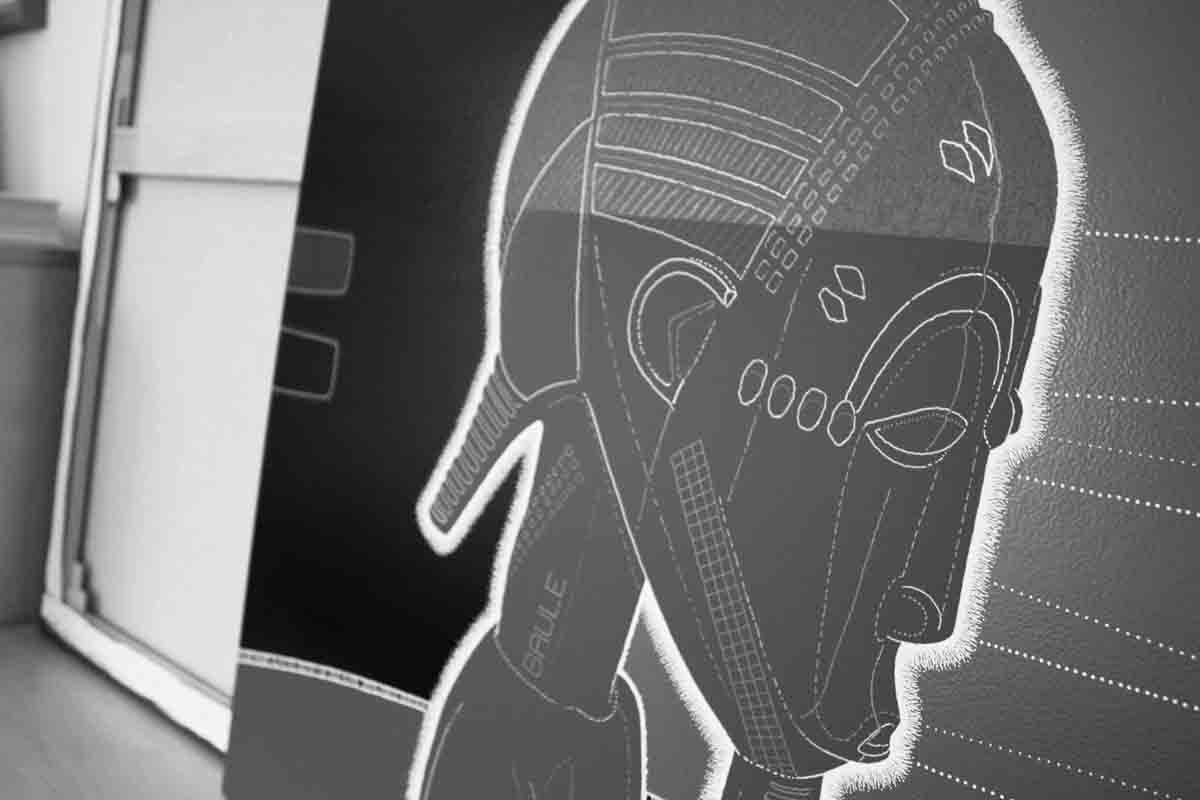
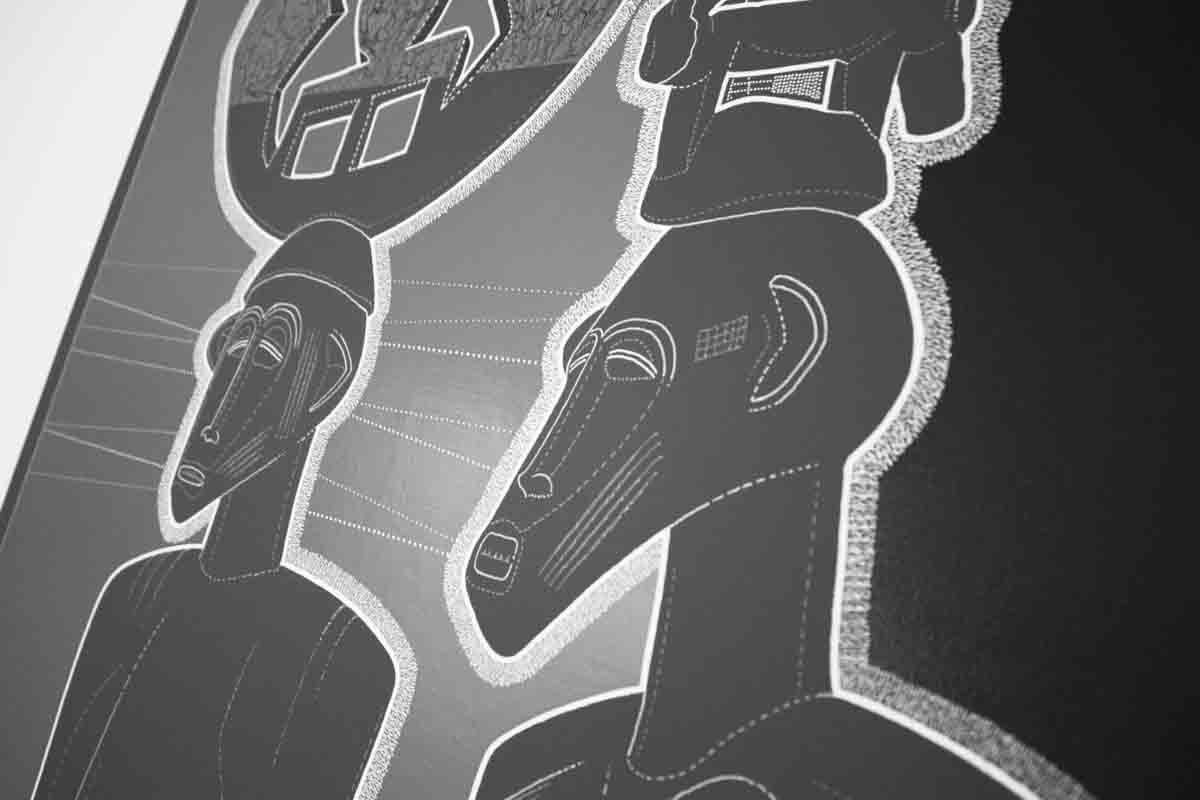

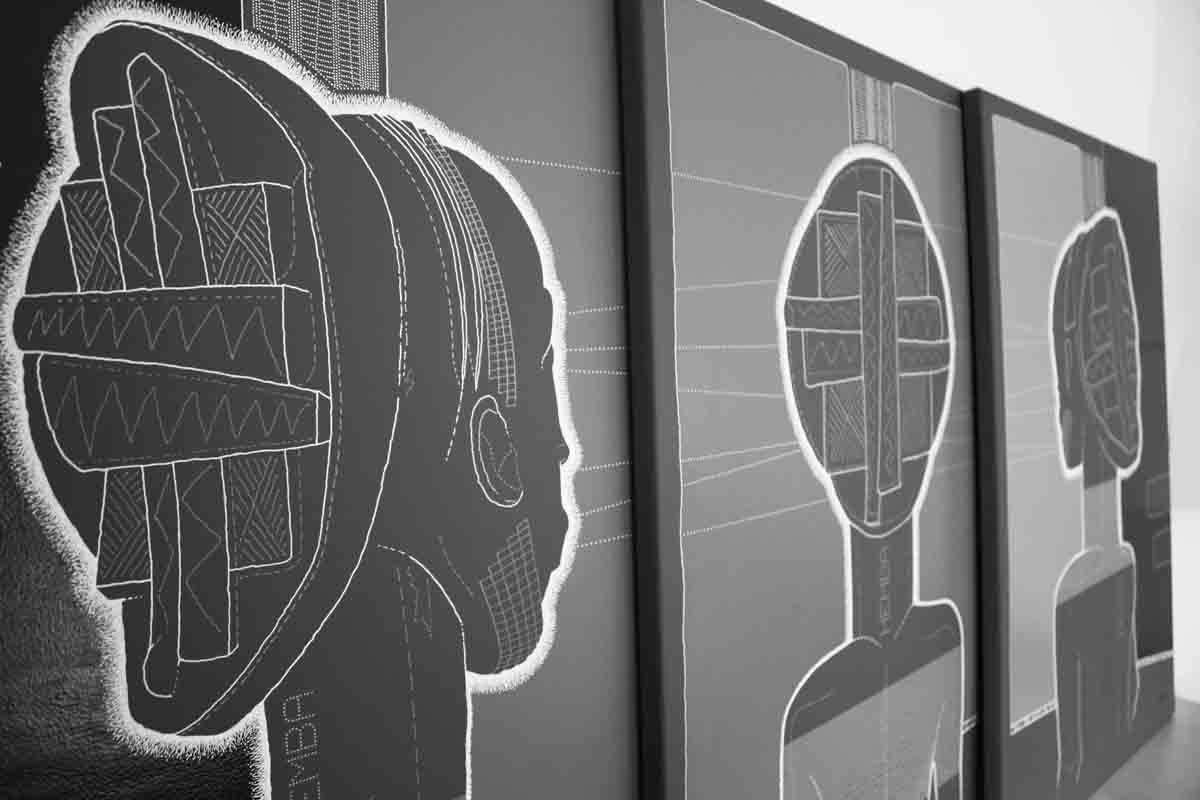
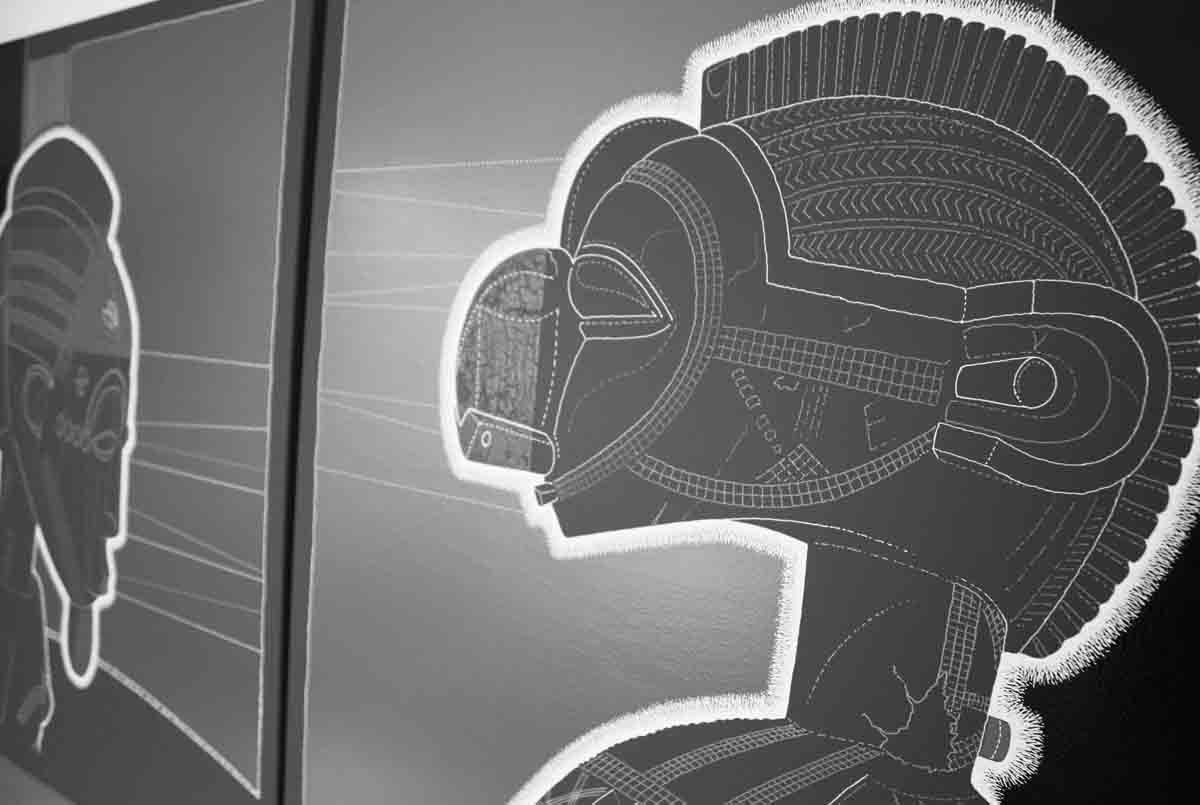

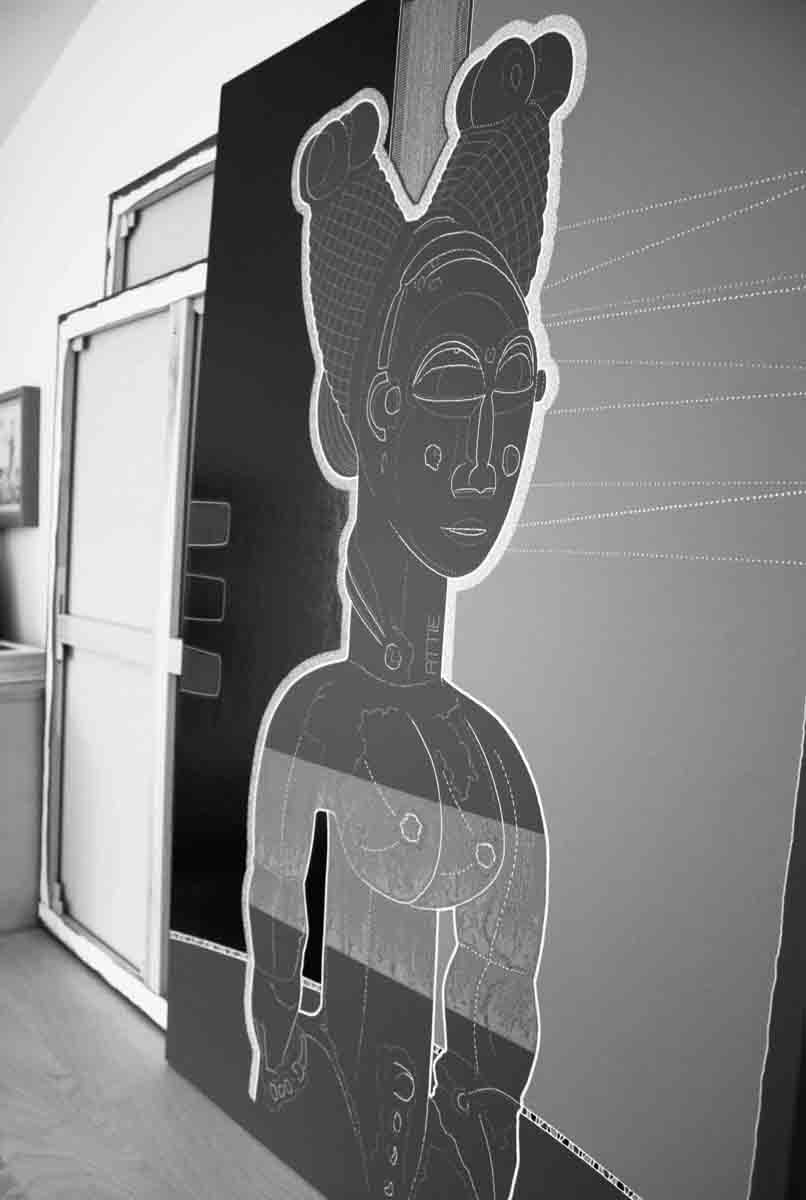


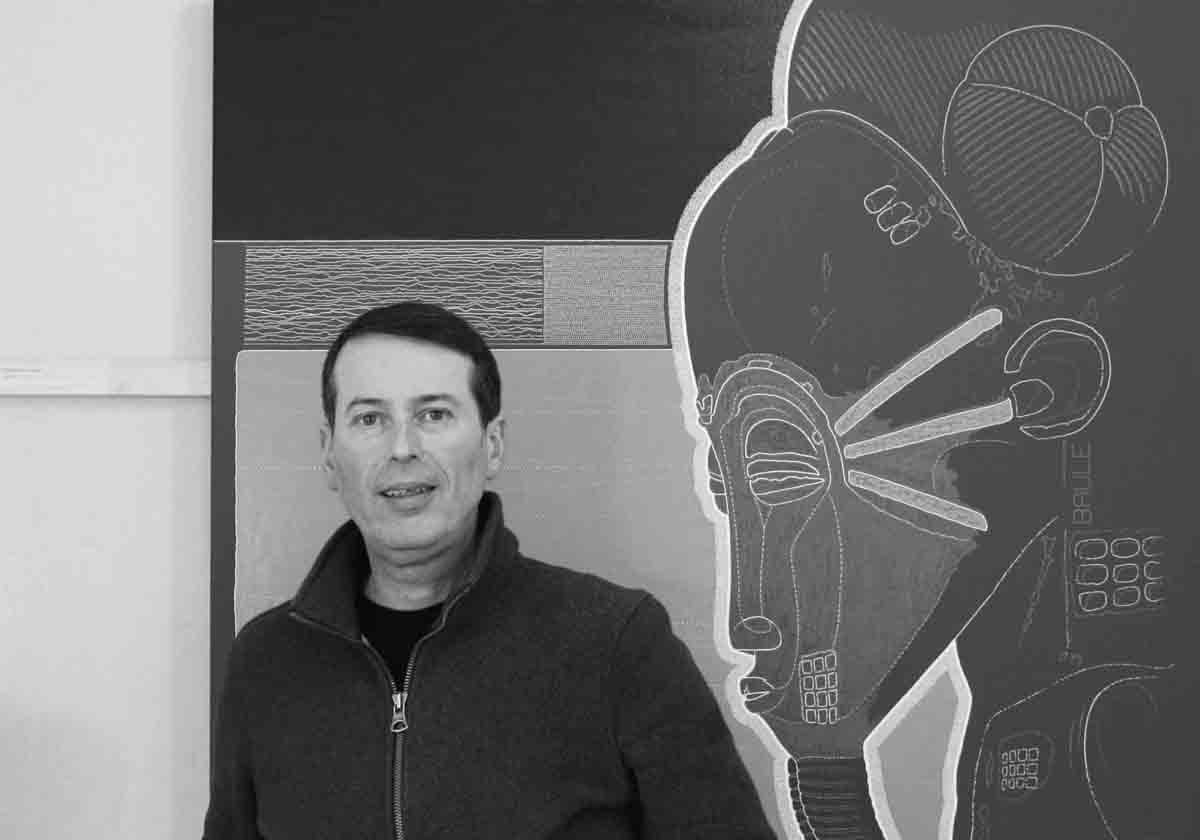
Description of the paintings
The subject of the portraits, usually statues, take centre stage. The ways in which these pieces are normally perceived are played with. The height of the original is often amplified, either to bring it closer to human proportions, or to augment its natural power. They are usually posed face on or in profile to better reveal their shapes. Deprived of their three-dimensionality, the statues are treated like silhouettes whose marked contours are illuminated by a halo of light.
The halo, which is composed of interlacing white filaments, captures the central form like an imprint. The face and the body are tinted in the same neutral grey used as the canvas’ background. They are presented almost without shadow. The materials they are made of is deliberately obscured, and is only partially revealed in selected sections. The top layer of paint is cracked, reminiscent of the texture of ancient materials. Without recourse to light-play, contrast is achieved by the precision of the line, which remains faithful to the original piece.
The lines, white or pale grey, are on the whole drawn lightly, providing subtle guiding lines. Continuous, dashed or dotted, these lines signal the shape of the internal forms. They bring the main facial expressions to life in a way that is in harmony with the whole. The codes of representation of cultures are respected, with a small tattoo signally their original identity (series 2). The heads are more often than not capped by a “cerebral column”. Made up of a multitude of dots, this column rises up to the sky, like a breathing tube. It is a channel for thoughts, symbolising the spiritual exchange with the great beyond.
From gallery 3, this work will then change dimension by evolving towards different concepts such as that of the restitution of traditional works of art to the African continent. Beyond the spiritual dimension of African statues and masks, in the series “RESTITUTION … PLEASE WAIT” he discusses the concept of the return of works to their countries of origin. In a sometimes surrealist anachronism, his canvases question the course of so-called “classic” works and their current places of conservation.



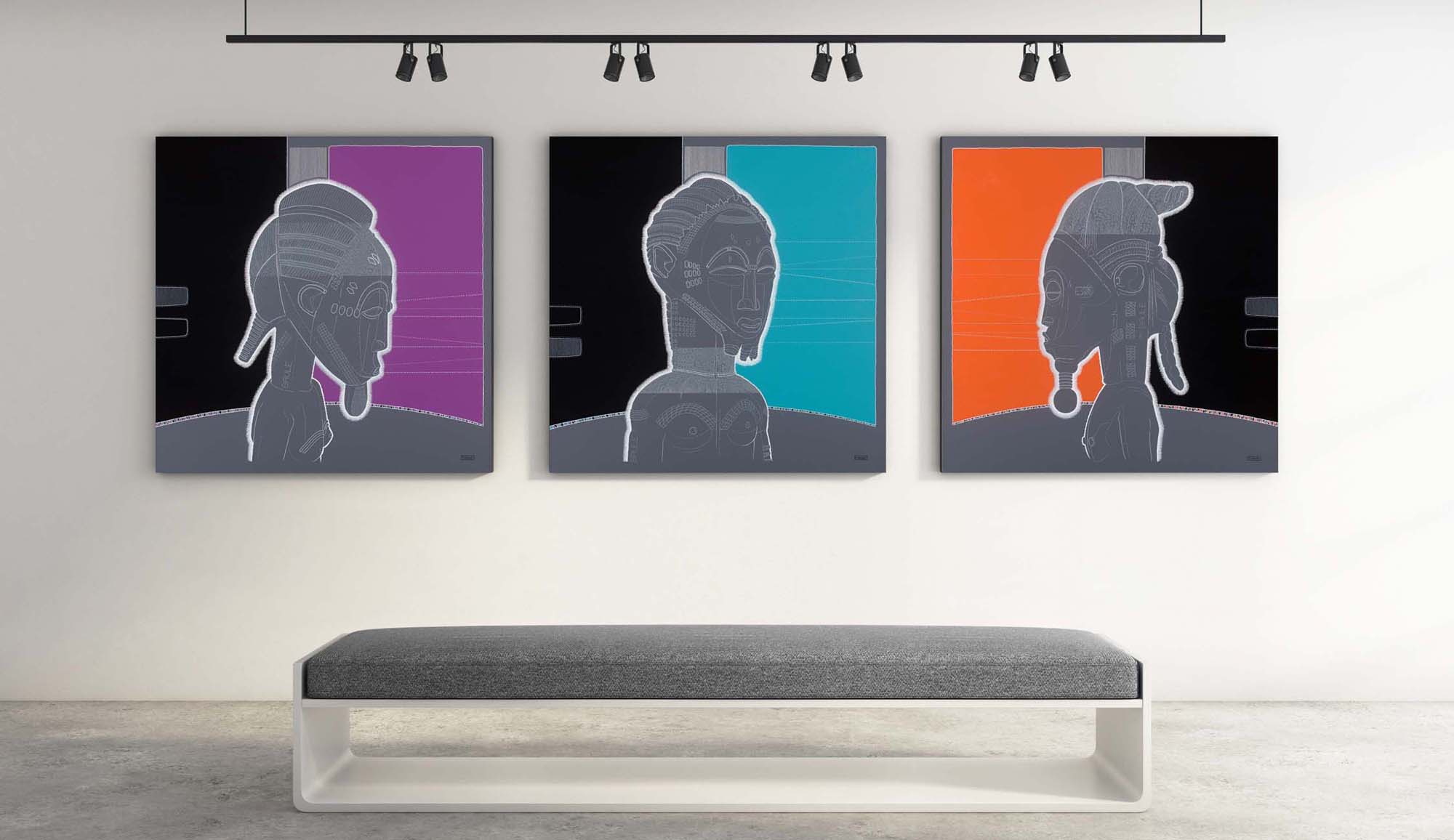

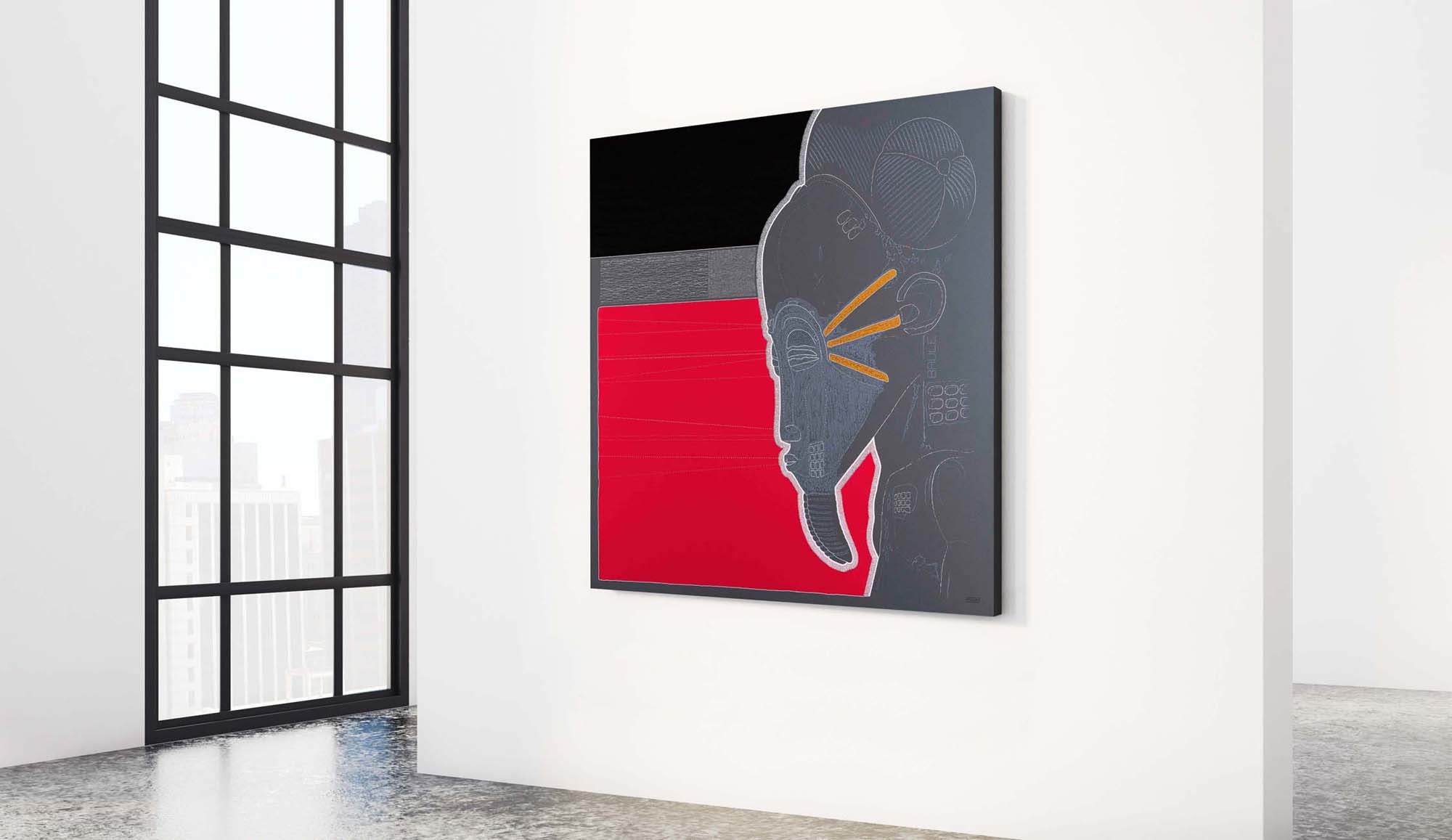



Exhibitions
– Nantes – “L’Atelier” (initially planned for June 2020, postponed to May/June 2021).
– Angers – “La Galerie”, 2019.
– Clisson – “In Arte Veritas”; “The Yellow Submarine”, 2018.

